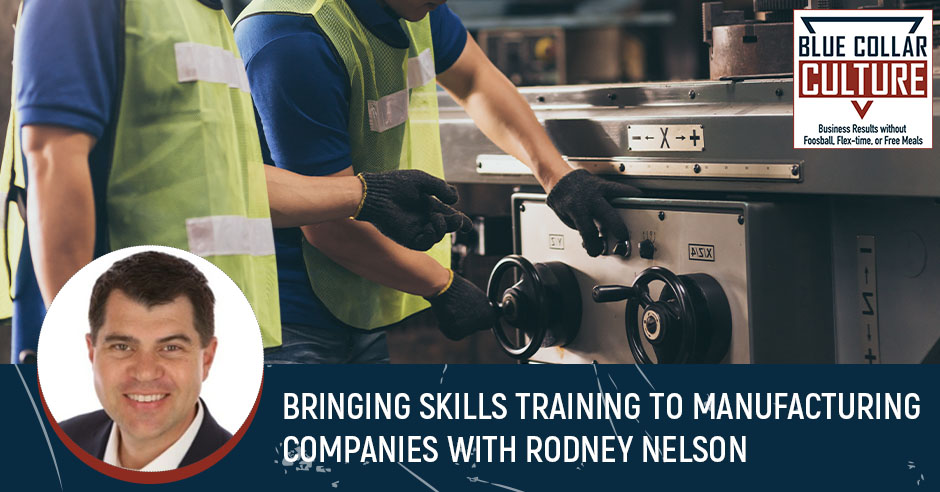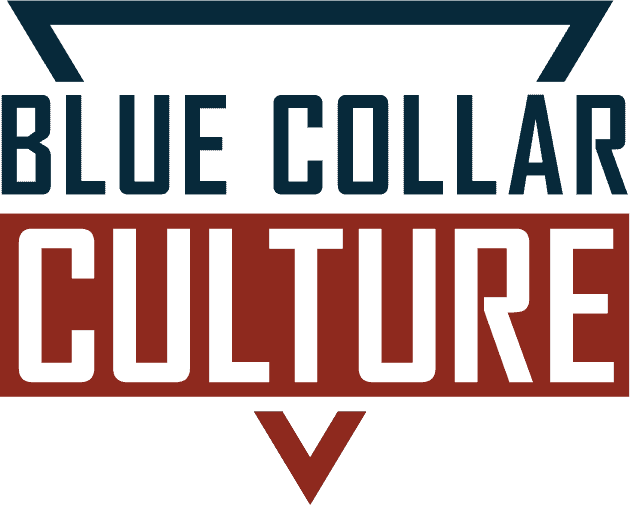
Skills training is an imperative if you want your business to succeed. A well-trained staff can mean the difference between success and failure. Ryan Englin and Jeremy Macliver are joined by Rodney Nelson, The VP of Client Operations for the Arizona MEP, to talk about how they are positively impacting small companies in the manufacturing space by providing skills training. Rodney shares his insights on working with companies and what training is most often needed, and he talks about the WIOA Fund and its impact on companies looking for help with training. Listen in for insights on training for skills in the manufacturing industry.
—
Bringing Skills Training To Manufacturing Companies With Rodney Nelson
I’m excited about our guest. The Manufacturing Extension Partnership is something that has been around for quite a while, but for a lot of manufacturing companies and businesses in general, this is one of the industry’s best-kept secrets. We are going to be speaking with one of the leaders here in the Phoenix area, talking about the opportunities that exist not just in training and development but also in the grant money that is available and how the MEP can help you get some free training for your teams. I want to give a big blue-collar welcome to our guest. Rodney Nelson, welcome to the show.
Thank you very much for having me.
I’m excited to have this conversation. Let’s start off with one of my favorite questions. What is the biggest myth about your industry?
In general, it’s that getting help from government agencies, county or state is tough and it doesn’t pay off. That is not the case. It can be tough. You got to know somebody to help you get there is the answer. There is help out there for sure.
Rodney, we have worked together now a couple of times and I have fallen prey to that myth. There have been some challenges with that, but I know working with several clients now that have had success working with you. Share with the audience how you go about this. I was with one of our mutual clients. He has got a $50,000 grant from you. I’m blown away at how the work was with you. Tell us an overview.
First of all, in general, there are a lot of different grants and incentives out there. I’m sure they vary by where you are located and what state you are in or what county. The one you are talking about in particular is a grant that is from the City of Phoenix. It originates as federal dollars that are doled out to the various states across the country. I don’t know all the details about it exactly. I want to even tell you an acronym, but I don’t know what that acronym stands for. It’s WIOA Fund. The readers can go ahead and look that up. These funds are getting to the states to help the workforce. As you can imagine and this is probably where the myth might be somewhat a reality, is that these government agencies are not marketing. They don’t know how to market what they have.
There are some big companies that don't necessarily need help and there are ones that do. Click To TweetThey are sitting on these funds. A lot of them, I would assume across the country and the state, don’t know what to do with them. Thankfully, the City of Phoenix is a step up here. They have a program put together where they will help pay for training for local companies. I support mostly manufacturers, but this training isn’t just for manufacturers. It’s for any company here locally. One of the companies that I was working with happened to be in the City of Phoenix. I happened to bring up this training grant. I knew that they also could use the help. There are some big companies that don’t necessarily need help and there are ones that do. This is a training grant that is through the City of Phoenix that is all federally funded and happened to fit in with our client.
You said to help them. Help us understand what help is. Do you guys help them with leadership training or sales training? What do you help them with?
The grant is to help them with any training. My expertise and what I do with Arizona Manufacturing Extension Partnership, MEP for short, is we supply all types of training and services. Most of it is geared towards manufacturing, but that is not the case because all companies need a lot of the same stuff. Some of the major things that we do are leadership training or training that you do Jeremy with EOS. Also, since we do focus on manufacturing, we do a lot of lean manufacturing training. There is a lot of other stuff like Excel training and training with any type of Microsoft Suite. That is where we usually help with when we do these City of Phoenix training grants because a lot of the companies fall into the majority of the services we offer.
It is any training that they need to get to the next level, particularly yours, if they focused on manufacturing. It sounds like the Phoenix Grant even extends beyond that. Is that what I’m understanding?
Yes. Since we’re involved in helping with that training and it is a complicated process, typically, when we are working with our clients, we are the ones bringing them the training. If they need leadership training, we are going to say, “We have the leadership person. We will help get that to you.” Oftentimes, especially in the blue-collar type companies, there is a lot of machines going on, there is a lot of equipment and they need vendor support. Sometimes these vendors are out of state and they got to fly in here. I know I had one client that needed training on this punch press. It was a $6,000 fee. That’s something that since I’m already helping them out with this leadership training, it doesn’t take any time to me at all to push that training that is from an outside vendor that isn’t going through us into that program. They get the benefit of that, too.
On that $6,000, how much does the company pay for?

Tell me if I’m getting too far in the weeds here. The smaller company they are, the more that the training grant will cover. The larger the company, the less that they will cover. However, the way that this program is written in the City of Phoenix is that they consider in kind. They consider your staff and the salary that you are paying them while they are in their training. They consider the money that you are putting into the program. Oftentimes, even though the grant might only be covering 75% of the training fees, these companies’ money that they are putting in for the people who are doing the training, that is as much as the training itself. They consider that a match. Long story short, they would pay for about $50,000 max per company.
Even if that is only 50%, which I know in all of the different clients I’m working with you, none of them there is at 50%. Even if it is, that’s a steal of a deal. Working with all of the clients that I get to work with, I get to see tons of different successes. We have seen double-net profit when breaking through some leadership training. We have seen a growth of 30% as they break free to get that clarity. Ryan was working with the hiring. We have seen them fill spots and get 83 applicants in four days after that. I’m sure you got tons of success stories. I would love to hear a couple of those that you have applied training and you helped them out. Where did they get to? I would love to hear 1 or 2 of those.
I will give you one of my first early ones that were successful. My background is in the manufacturing of Lean Six Sigma-type activities. I went to one of our local companies and they were having problems with their yields. What we find a lot of times is that the smaller and medium-sized companies, meaning companies that are probably around less than 100 people. That would be medium-sized. Smaller typically for us is around twenty people. A lot of these companies don’t have the resources that larger companies do. They don’t have the programs in place. We bring in one of our training experts. I will throw out his name here. He is awesome. His name is Jim Godfrey. He is great to work with and super knowledgeable. We will bring him in. I brought him into this one client and they were having a problem with their yields. They couldn’t figure it out.
We did the standard root cause analysis, which there is a way to do this called the 8D program. It goes through these various steps to help them figure it out. Sometimes I can read their yield was around 70%. Walking them through this process, that has proven that a lot of larger companies use it all the time. I have used it in the background with companies I work with locally on the semiconductor. We used it with a lot of 8D processes. We were able to start focusing on what the real root cause was and where these failures were occurring and then helping to identify those and train the employees on what to look for. We took their yields from the 70s to the high 90s, which is where it improved. We were only three days there. I could keep going on. That is a real quick impact for a company to change their yield from the 70s to the high 90s.
Rodney, I got a question for you. I know you have got a very extensive background. There is probably not a part of a business that you couldn’t look at and help somebody with. You were talking about these training grants and all the different types of training that are out there. If you think on average, what would you say the average business owner needs the most when it comes to training? Beyond that, what is the one they are least excited about that they need the most?
There are two different answers.
The one thing that companies need that they are not excited about is the financial management piece. Click To TweetI get it. That is why I posed both questions.
Leadership training, I think that is the biggest thing that they need. There is a lot around leadership. Typically, when I go to work with a company, leadership turns into things like EOS training and it turns into HR training. Leadership, in general, is a big thing because people go up the ladder and they have no business being a leader. I’m sure we have all experienced that. The one thing that companies need that they are not excited about is the financial management piece. In this job, I learned too. I used to own my own company as well. One of the biggest things that if I could go back in time, it would be with the financial management piece.
Do you get a lot of pushback when you recommend that financial management piece? How do you help people see that is what they need?
I think I figured that out. I’ll give you my pitch on that. This is my take. I assume and I’m writing 99.9% of the time for this fact is that, if a company owner was an accountant or had a CPA background, they would never start their business because that’s risky. CPAs and tax guys are not going to start a business. They will all lose money. That is why these owners don’t have that expertise. Company owners are visionaries. Company owners are inventors. Company owners are everything. There are daughters that inherit companies, but they are not accountants and don’t know the first thing about it.
The problem here is that they need to be experts financially to steer the ship of their company and set financial goals. The biggest problem here is that their in-house bookkeeper or controller doesn’t know about strategy financially. They don’t know what those reports are. Their tax accountant, who’s doing their taxes, just wants the tax information. Nobody is helping steer the ship here. That is why the biggest thing that they need is financial management. What we do is a quick assessment for them. We bring in our experts that then will help them develop these financial management reports, which will help steer the ship.
I love what you said there because I ran into it so many times with entrepreneurs, which are typically visionaries. That is what we call it within EOS. They are the ones with the bright and big idea that they could go sell it and we need them. Too often, they are relying on in an accountant. I don’t want to ever say anything negative there. They are relying on them when all that accountant is looking for is the tax side of it, not the financial strategy piece that is missing.

We teach a tool called 8 Cash Flow Drivers. It’s looking at what’s driving the cash throughout the company, which is different than profit. You and I know that. Profit is just the bottom line, but cash is how it’s flowing. When we teach that, we look at how it’s being managed all the way throughout, like the frontline people and the people on the floor manufacturing. Are there activities accelerating cash? Lowering cash? What are they doing? We are looking at it collectively across the whole business. You were speaking some of my soapboxes there as I look at it and say, “It’s way more than financial report at the end.”
One of our guys who helps us out likes to call himself the CFO, the Cash Flow Optimizer. We are on the same page there.
That is the one thing we are excited to get you on the show after seeing your work and some of the results. It’s been way more than just filling out paperwork to get a training program to run with something through. Often, you think it would be the way it was, but you are much more focused on what kind of results. One thing I wanted to highlight about the program you can explain more, is not only do you get the grant for them, but you’re there to mentor them throughout that year as they work with these consultants. You have the CFO, the Cash Flow Optimizer. I know we are working with you. You’ve got salespeople and all of that stuff. You’re working to coordinate and make sure that the business is getting results versus “Are they getting training?” I don’t know if you would share anything about how you help support that. I think it’s something that is unique.
If I could take one step back, one of the major parts of our program is that we get results for the company. That is what makes us different than any other consultants out there in that we are partially federally funded. When I go and do a program like with these clients, our goal isn’t to make money. Our goal is to have them fill out a good survey about us. I was running around and chasing clients to fill these surveys up. What keeps us honest is that when they fill out the survey, there are only ten questions. Some of them are, “Did we help improve your revenue? Did we help save you money? Did we help to improve you to grow jobs?” If any of our people ever thought that we were bringing them something that didn’t pan out, I will never give somebody something that they don’t need. That is not going to help them out. That goes to how we even approach our clients. I don’t sell them on things. I ask them what their problems are. I will then give them a solution to that problem. I forgot exactly what you asked me.
It’s about how you manage because you work with the consultant and company. It’s not just, “I filled out a piece of paper. My job is done.” It’s, “We want to make sure we get measurable results.” That was what I was wanting to highlight that you do that, which is impressive.
We project-manage. I call it maybe project management. We are making sure things are going smoothly. That is with communication. It’s making sure they are getting the deliverable right. It’s us understanding what is going on because, as you can imagine, there are going to be hiccups. I have saved a lot of projects when there is confusion or not a clear understanding of how things are supposed to go down. I’m there to keep things smooth and on track so everybody is happy and we get the results that we were thinking we are going to get.
There is no negotiation going on for the market and what size of the company you are. You need to surprise these candidates to come work for you. Click To TweetYou know that hiring is a very dear and near passion of Ryan and me. What are some of the challenges you are seeing as we move into this next level of our economy? It’s gangbuster, yet we can’t seem to find work. What are you seeing teams do to overcome that? What kind of things are they working on?
I think this is crazy out there. I was meeting with a client about staffing. It’s one of the biggest things we are doing. They need help in every direction. It depends on the size of the company and what their pain points are.
In that 20 to 100 size, let’s stick right there. What are you seeing? What are some things that are working? Are you seeing like, “That’s good to protect me?”
Throw everything at it because I don’t think there is one thing that is working. It goes to what Ryan does, Core Matters. They need to brand themselves. Otherwise, why are they going to come work for them? Everyone has a job already. These people need to be moved. I had one client. We already had an agreement on what the base was going to be. When it was delivered, it was delivered where there could be some type of negotiation. There is no negotiation going on for the market and what size of the company you are.
You need to surprise these candidates to come work for you. They still need all the Google tech stuff. It’s great you have food in your refrigerator, but really, “I need the pay, vacation and benefits. I need to be moved.” If you don’t, there is somebody else that is going to be. You have to throw the whole kitchen sink at this thing. You have to be branding your company, doing your research and making sure that your salaries are on par. You need to even offer more training when they come there so that they can grow with their job. You have to throw everything at this thing.
I am seeing that ongoing training providing some additional value to them. Everybody is looking at this very competitively. When I say everybody, I’m talking about the employees. Very competitively that they believe they got a lot of options. If this option isn’t giving me more opportunities to either make more money, grow, go to the next level of my career and/or make a difference in the community, I’m seeing a lot of that with the companies that we are working with, which is blue-collar. It’s primarily what we focus on. Seeing more about what is the big difference we are making in the world as this world’s message changes and adjust, I’m seeing that would be one of the differentiators. I know Ryan works on a lot of that when he is working with the clients on getting that right message and brand that people are aligned. In the world now, every employee has got an option and they know it.

I finished some research and got some statistics because, during the whole pandemic, it has been hard to get reliable data. By the time the reports and the surveys are done, that data is out of date because something has changed in the economy or politically or something like that. We finally had enough stability and knew where things are going. There are these reports starting to come out. This one blew me away. Millennials account for 50% of the workforce.
Millennials aren’t even old anymore. I used to think they were all young.
Every single person has a joke about a Millennial. They know you are telling jokes about them. Stop it. They are going to take over the country and the world. We got to learn to play nice with them. The thing about Millennials, 93% of them prioritize skill development and training over anything else. If you are not training them to climb that corporate ladder to get more skills so that they can make more money or lead teams and you don’t have a training program that you are promoting to them, they are going to move on.
The other thing I thought was interesting is 86% of them will take a pay cut to work at a place whose mission and values align with their own. This is what Jeremy was talking about. They want to feel like they are making a difference and they are making it part of a team, where they get out of bed in the morning. They are excited to go to work because they know they are going to have done something to improve or make the world or maybe even their community a better place.
It’s funny you have those statistics, Ryan. I didn’t know those. It’s what I’m seeing in the trenches. When I see the companies that are starting to leverage anything, it’s the reality that I’m seeing. That is probably why I feel like having you on Rodney is such an important time. What you are helping to do is to leverage that company that is coming out of the COVID setbacks of 2020. You are helping to leverage the training and the ability for them to grow while giving them one of the biggest and most critical things to attracting half the workforce. It is extremely critical to what is going on in the world. We have provided tons of value here. What I would like for you to do is share how they can go get access to you to figure out if they qualify for any of these grants. Where can they go? What can they do?
It is best to reach out to us directly. Our website is www.AZMEP.org. If you go there, then you can see the team. You can contact us. Our phone numbers and emails are there or call the main number. What we are going to do is go through this. I was saying earlier it’s how this marketing piece of what is out there is taught because there are more than just things that are offered from the state, city, county and utility companies. There are things out there. Coming to us is like a one-stop shop. Meaning if you come to us and ask us, “What is out there that I can take advantage of who is trying to help me?” we can give you a list of those things. It’s not an actual list, but we can tell you what might be able to help you and how you can take advantage of that.
If they go to AZMEP.org, they can get access to all of the stuff. For everybody who is out there, if you feel like you want to be competitive at hiring over half of the population or all of it in any way, by any training or any of that, you are spending any money on training or you have anything that you feel like if we could do better, we would be better, I would encourage you to go to AZMEP.org. Look up Rodney’s information, look up the team and see how they can help because I can speak from this side of it. I have seen many clients helped. I know this is the real deal. We are happy to share it with all of you. Thank you, Rodney, so much for being with us. It has been great.
Thank you very much for having me here. I appreciate it.
Important Links:
- Manufacturing Extension Partnership
- Rodney Nelson
- WIOA
- Jim Godfrey – LinkedIn
- 8 Cash Flow Drivers
- www.AZMEP.org
About Rodney Nelson

